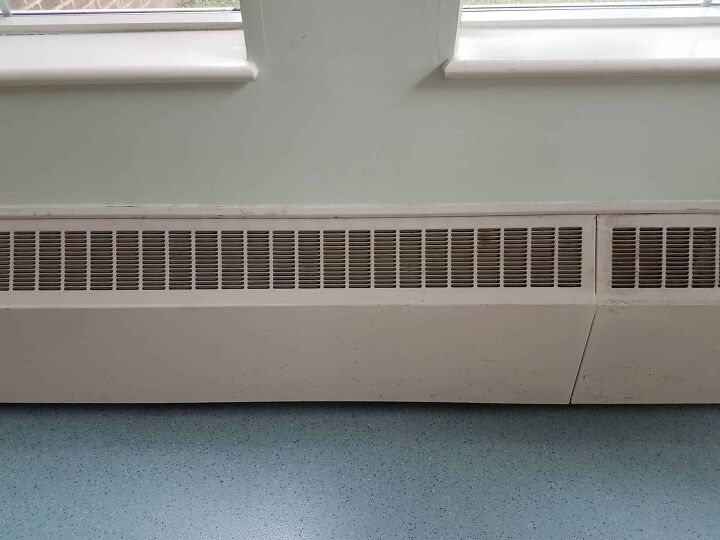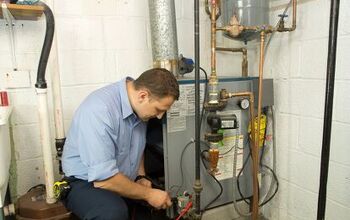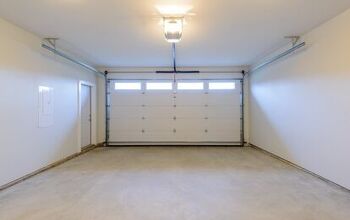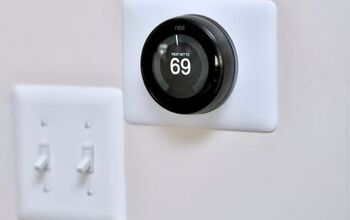Baseboard Heater Won't Turn Off? (Possible Causes & Fixes)

Baseboard heaters are a great convenience, which is why many builder owners choose them for their homes. They are highly energy-efficient and give you control over the temperature of each room of your house. However, it can be quite unsettling when you go to turn off your baseboard heater and nothing happens.
If your baseboard heater won’t turn off, it is likely due to the thermostat. Thermostats can run into many problems, and if your baseboard heaters don’t turn off when you lower the temperature, your thermostat is to blame. The best solution is to simply replace your thermostat, and your baseboard heater should turn off.
For an easy fix that anyone can do, tap the thermostat as much as you need to for it to work. This fix is short term and won’t last, if it works in the first place, but it can shut the baseboard heater off.
Follow along and let’s see what you can do when your baseboard heater won’t turn off.
Do You Need Baseboard or Wall Heater Installation Services?
Get free, zero-commitment quotes from pro contractors near you.

Why Won’t My Baseboard Heater Turn Off?
More often than not, your baseboard heater won’t turn off because the thermostat is damaged. There are several other ways to tell the problem is the thermostat, such as:
- The A/C runs at all times
- Your room is not the same temperature as the thermostat is set to
- Low battery notification
- Higher energy bills
- It has been 8-12 years since you got a new thermostat
If the A/C is running at all times, your thermostat is to blame. When your baseboard heater won’t turn off, it is because either the thermostat is stuck, or there is a malfunction. Both of these problems can be solved by replacing the thermostat.
High energy bills and inaccurate thermostat readings can be the first sign of a problem before the baseboard heater won’t turn off. If you notice those signs, consider replacing the thermostat before your energy bills keep soaring.
Pay attention to see if you possibly missed a low battery notification. Some “smart” thermostats can directly message you if there is an error or the battery is low. Otherwise, check the battery level of your thermostat to catch it before it you can’t turn the baseboard heater off.
Video: Troubleshooting Baseboard Heaters
How To Replace a Thermostat
If you replace your thermostat, you will be able to turn off your baseboard heater. Removing the old thermostat and installing a new one alone can save you $80-$200 in labor from hiring out. You can easily find high-quality thermostats for $25-$50 to install yourself.
However, if you hire a professional to replace your thermostat for you, it could cost between $100 and $250. Because of that, you are better off replacing your thermostat on your own, if you are comfortable with it. You must shut off the power for your heating and air conditioner system before removing the old thermostat.
Now, it is safe to replace your thermostat so that your baseboard heater will function properly.
1. Unscrew the Old Thermostat
Your old, faulty thermostat is held in place by a cover plate and screws. Take a screwdriver, and unfasten the screws connecting the cover plate to the wall. Remove the cover plate and set it to the side for now.
The thermostat itself is attached to the wall via mounting screws. Unscrew them, remove the mounting screws, and carefully pull the thermostat away from the wall. There should be several wires left exposed running out of the thermostat base after you remove the thermostat.
2. Prepare the Wires
This step is critical because you must keep track of which wire is which. Assign a letter to each of the wires and write it down so that you can rewire them to the new thermostat shortly. Attach something like string, or even tape, to the wires so that you don’t lose track of them in case they fall through the wall.
Once you have gotten your wires organized, you can remove the thermostat base that is still attached to the wall. Pay close attention to the specific manufacturer installation directions, as some thermostats are different than others.
3. Attach the New Thermostat To the Wall
Before attaching the thermostat itself, run the low voltage wires that you prepared through the new base plate. All thermostat base plates are different, but there will be openings for the wires that are clear
Many thermostat bases have slots that are labeled based on color for the wires. Connect each wire to the correct color so that the connections line up.
4. Cover the Thermostat
Now, you need to attach the faceplate to cover the thermostat. Faceplates screw right onto thermostats and act as a cover. If you have trouble attaching the thermostat faceplate, try using drywall anchors.
5. Finish It Off
To finish it off, tuck all of the remaining wires together, and gently tuck them back into the wall if possible. If there are any terminals that you are not using, don’t leave them loose or exposed. Plug the hole in the wall with fiberglass insulation.
Tighten up all of the screws in both the base and the thermostat and check out its settings. Program the thermostat as needed and see if it allows you to turn your baseboard heater off.
Are There Any Other Possible Causes?
Faulty thermostats are the most common cause of a baseboard heater staying on, but a damaged check valve can cause it as well. Check valves are one-way port valves integral to hot water heating systems. If your check valve is damaged, defective, or old, it can keep your baseboard heater from turning off.
Luckily, check valves only cost $5-$12 and can be found at most hardware stores.
How to Fix It A Damaged Check Valve
You can easily replace the check valve so that your baseboard heater works as intended. A check valve is just a tiny brass fitting that comes right out of your water heater. It only takes a few quick steps to replace the check valve.
- Turn the water off and drain the water heater using the drain plug
- Disconnect hose attached to the check valve (no water should come out if emptied)
- Unscrew the old check valve
- Install the new check valve by screwing it in place of the old one
- Reattach the hose, turn on the water, and test it out
If replacing the check valve does not solve your baseboard heater problem, it is likely due to the thermostat.
Do You Need Baseboard or Wall Heater Installation Services?
Get free, zero-commitment quotes from pro contractors near you.

What Did We Learn?
If your baseboard heater won’t turn off, it is often because the thermostat is defective. You can replace a thermostat for $25-$50, or you can hire out for the unit and labor for $100-$250. Be careful when replacing a thermostat to make sure that you keep track of the proper wires.
Sometimes, however, the problem is as simple as the thermostat needing new batteries. Lookout to see where your thermostat’s battery level is at so that you can catch a dead battery before it is reflected in your energy bills. In some cases, your baseboard heater won’t shut off if your heating system is hot water based and the check valve is damaged.
Whether it is a thermostat problem, or a check valve problem, you should have no trouble fixing it. If your baseboard heater won’t shut off, get a new thermostat, or check valve.

Nick Durante is a professional writer with a primary focus on home improvement. When he is not writing about home improvement or taking on projects around the house, he likes to read and create art. He is always looking towards the newest trends in home improvement.
More by Nick Durante


















![10 Most Dangerous Neighborhoods in Baltimore [Updated]](https://cdn-fastly.upgradedhome.com/media/2023/07/31/9075655/10-most-dangerous-neighborhoods-in-baltimore-updated.jpg?size=350x220)








